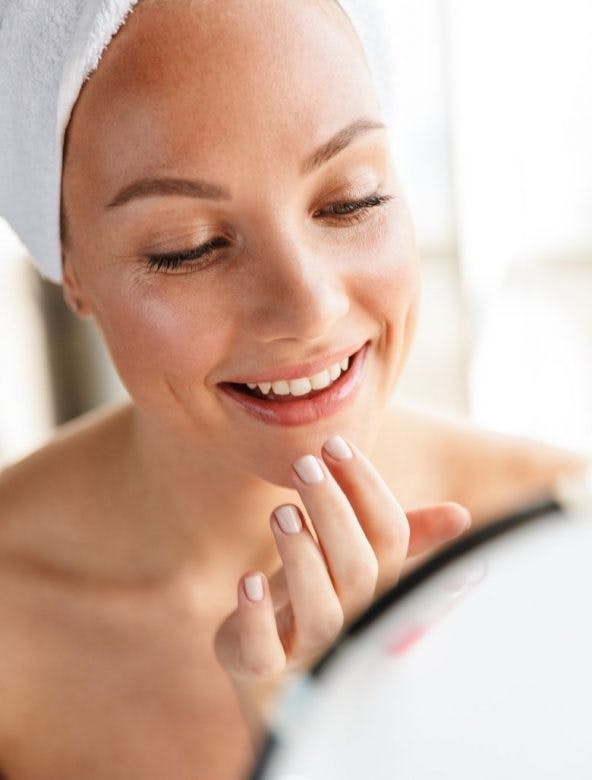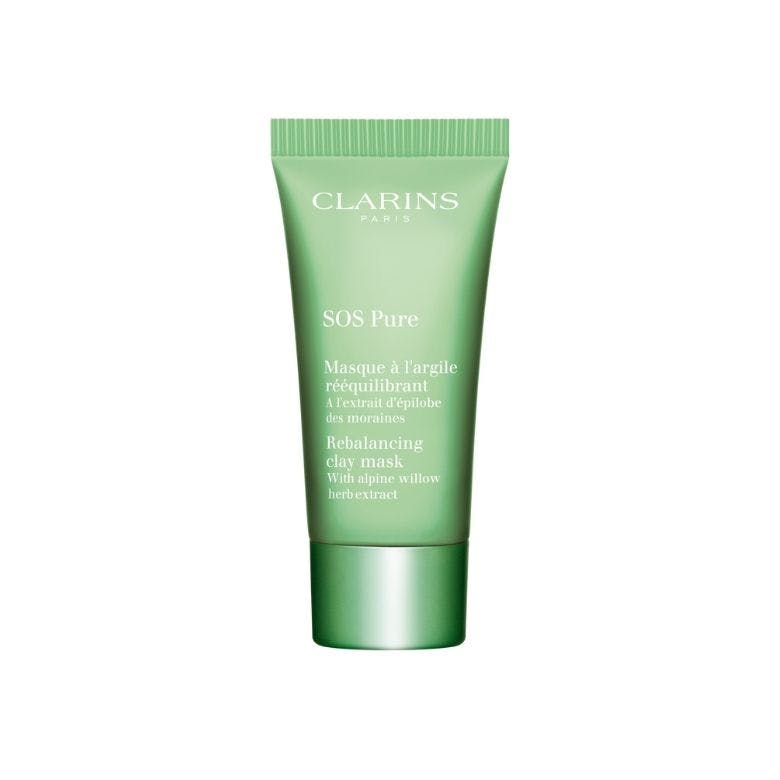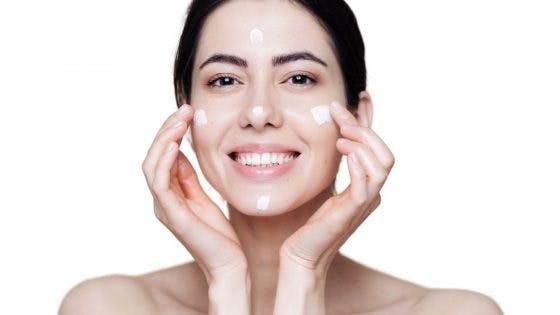Want to Get Rid Of Oily Skin? Follow This Derm-Approved Regime
5 minutes read
We are inundated with ‘glowy skin’ tutorials. From how to create a glass-like gloss to radiant, dewy and gleamy-glows. But what about when you have too much shine and oily skin – you’re dripping in grease that results in blemishes, blackheads and open pores and make-up that slides off before lunch. Well, there is a better way; here’s expert advice on how to get rid of oily skin.
What is oily skin?
Study your face in the mirror. You have sebaceous glands under your pores that produce sebum, a natural oil. Oily skin is when your sebaceous glands are overactive and produce more sebum than you need.
What’s more, oily skin tends to cause pimples, even acne, and although that can be a regular part of adolescence, it’s frustrating and can affect your self-esteem when it continues.

Causes of oily skin
The causes of this skin condition differ from one person to the next. They include:
-
Hormones
-
Genetics
-
Diet
-
Your cleansing routine
-
The products you use on your face
-
Overactive sebaceous glands.
Effects of having oily skin:
Disadvantages:
-
It blocks pores and causes breakouts, which can lead to acne.
-
Limits choice of make-up as many products make your skin oilier.
-
Make-up doesn’t stay on your face as long.
Advantages:
-
Skin remains moisturised compared to dry and normal skin types.
-
People with oily skin don’t age as quickly.
-
Your skin tans easily and doesn’t burn (but you still need to wear an excellent sunscreen – either SPF30 or SPF50).
-
Protects against the environment. Oily skin “acts as a barrier against air pollution, wind and sun”. It doesn’t block out these harmful elements completely, but the oil on your skin acts as a shield.
How to get rid of oily skin at home
Start with a good beauty routine – Dermatologist-approved advice:
According to the Academy of Dermatology:
-
Wash your face regularly – morning, evening and after exercise. Don’t overly rough up your skin. Use a gentle cleanser that won’t clog your pores, one that cleans, purifies, and mattifies skin.
-
Use Pore Control Serum, which keeps shine in check.
-
Oily skin remarkably still needs hydration, so apply moisturiser day and night. Clarins recommends a lighter, fluid gel or cream. For younger skin, try the RE-BOOST Matifying Hydrating Cream, formulated with powerful fruit extracts, purifying alpenrose and nourishing organic coconut water.
-
Exfoliate skin regularly (1-2 times per week) with a gentle, purifying gel scrub.
-
Once or twice a week, use a rebalancing clay mask that purifies the skin and tightens pores in just 10 minutes. It leaves skin glowing with zero shine.

-
Don’t forget sunscreen – come rain or shine, you need to be protected from harsh UV rays. Our choice? Dry Touch Facial Suncare.
-
Use oil-free, water-based make-up – the more natural the ingredients, the better. Choose a foundation that suits your lifestyle as well as your oily skin.
-
Touch up during the day with a Pore-Less Blue and Matte Stick – it can be used under or over make-up to keep grease and open pores in check.
How to get rid of oily skin – diet
-
Omega-3 fatty acids – salmon, tuna, trout and shellfish, canola oil, walnuts and flaxseed – lower inflammation and may help to keep acne away. They also assist in lowering the amount of protein produced (called IGF-1), which is linked to acne.
-
Antioxidants are found in numerous foods – berries, artichokes, kale, spinach, pecan nuts, dark chocolate, red cabbage, beans and beetroot. These compounds reduce inflammation, allowing your skin to repair itself and fix visible damage.
-
Probiotics are known as ‘good bacteria’. They are found in yoghurt, sauerkraut, kefir, miso, kombucha, pickles and buttermilk and are known to promote good digestion and a better immune system as well as quelling inflammation in the body that might lead to acne and problematic skin.
-
Green Tea is known for being rich in a substance called EGCG, a polyphenol that improves acne and oily skin. EGCG (epigallocatechin gallate) helps stop this cycle.
-
Certain fruits and vegetables may help keep oil production under control. These include cucumber, lemon, banana, very dark chocolate, coconut water, broccoli, and pulses (chickpeas, lentils, peas, and beans).
-
Foods containing zinc include oysters, crab, lobster, red meat, poultry, beans, nuts, whole grains, and dairy products. This nutrient helps get rid of bacteria that cause certain types of acne, by reducing inflammation.
Home remedies that help inflammation
-
Honey – a natural antibacterial, gets rid of excess oil and bacteria. Put onto your face for a few minutes, then wash off with warm water.
-
Oatmeal – an anti-inflammatory that calms the skin, gently exfoliates and absorbs oil. Use uncooked oatmeal as a face mask. Leave on for 20 minutes.
-
Aloe vera soothes the skin, so it’s often used to treat sunburn. It also treats inflammation. Before bedtime, massage a layer onto your face and wash off in the morning.
-
Buttermilk is known for improving the skin’s texture. It’s high in lactic acid, which has a skin-smoothing effect. Make a mask from a 50/50 ratio of buttermilk and uncooked oats. Leave on the skin for 20 minutes.
-
Alpine willow herbs – found in the SOS Pure Rebalancing Mask, when used twice a week helps to minimise shine and 90% of testers agreed their skin looked both beautiful and matte.
Acne treatments
-
Acne treatment: Oily skin and acne can go hand in hand, and there are several cosmetic acne treatments to remedy this, depending on how severe the problem is.
-
Targeted treatments for acne: For pesky pimples try the Clear Out Targets Imperfections – it contains salicylic acid, meadowsweet and purslane to take down the inflammation and clear clogged pores whilst soothing irritation.
Is oily skin manageable, or is it a permanent problem?
Oily skin is most common during puberty and adolescence and usually disappears as we reach adulthood. But some of us have oily skin for much longer. This is directly related to our genes, how our hormones fluctuate and how much sebum our sebaceous glands produce.
It’s hard to find a one-size-fits-all solution for oily skin. However, when you make good diet and lifestyle choices, use a dedicated skincare regimen consistently for your type; it will give you a head start at giving oily skin the slip.
Sign up for our newsletter
We will keep you in the loop for special offers, exclusive gifts and product news.

